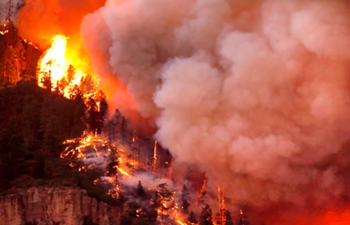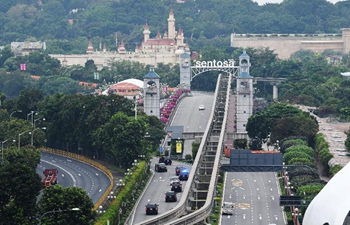SAN FRANCISCO, June 12 (Xinhua) -- International scholars and experts will meet next week to discuss how to best protect the West Coast of the Pacific Ocean from oil spills and pollution, the environment authorities of Oregon said Tuesday.
The Oregon Department of Environment Quality (DEQ) said in a statement that it will host the annual meeting in the coastal city of Portland on June 19, when members of the Pacific States-British Columbia of Canada Oil Spill Task Force will work together to share their views and progress on prevention of oil spills and pollution associated with derelict and abandoned vessels.
They will also discuss how to implement regional initiatives to help protect 56,600 miles (about 91,089 km) of coastline stretching from Alaska to California, including the Hawaiian Islands.
This year's event will feature a series of panel discussions with guests who are actively involved in federal, state or provincial efforts to manage abandoned and derelict vessels, said the DEQ.
The panel discussions will cover information on funding, prevention, cleanup and removal, and other challenges associated with managing these vessels across the Task Force jurisdictions.
Governors of the U.S. states of Alaska, Oregon, Washington and California, as well as the premier of British Columbia signed the Memorandum of Cooperation in 1989 to launch the Task Force, following the disastrous Exxon Valdez and Nestucca oil spills.
The Exxon Valdez oil spill occurred in Alaska on March 24, 1989 when the oil tanker Exxon Valdez, owned by Exxon Shipping Company, bound for Long Beach in California, struck the Bligh Island Reef in Alaska and ran aground.
The accident spilled 10.8 million U.S. gallons (41,000 cubic meters) of crude oil over the next few days, and polluted about 2,100 km of coastline and 28,000 square km of ocean.
The spillover was considered to be one of the most devastating human-caused environmental disasters.
A few months earlier, the tug, Ocean Service, collided with the barge, Nestucca, on Dec. 22, 1988, which spilled more than 230,000 gallons (about 871 cubic meters) of fuel oil into the Pacific Ocean near Grays Harbor in Washington state.
The resulting oil slick dispersed over 800 square miles (about 2,072 square km) from Grays Harbor north to Vancouver Island in British Columbia and south to Oregon.













